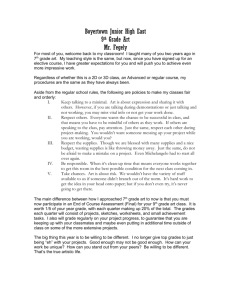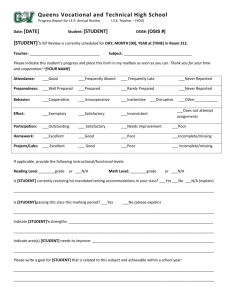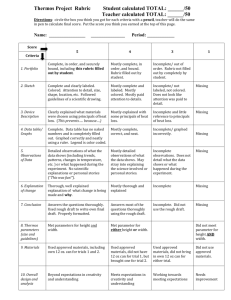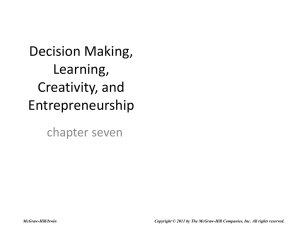PA Healthy & Green Mini-Grant Application & Worksheet
advertisement
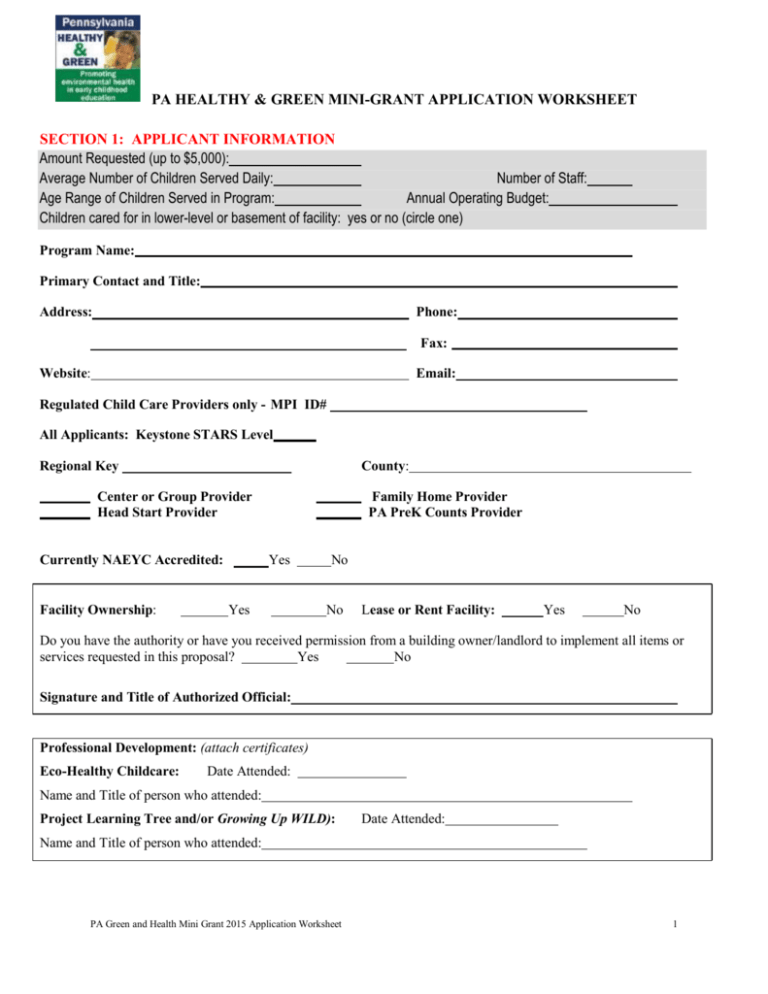
PA HEALTHY & GREEN MINI-GRANT APPLICATION WORKSHEET SECTION 1: APPLICANT INFORMATION Amount Requested (up to $5,000): Average Number of Children Served Daily: Number of Staff: Age Range of Children Served in Program: Annual Operating Budget: Children cared for in lower-level or basement of facility: yes or no (circle one) Program Name: Primary Contact and Title: Address: Phone: Fax: Website: Email: Regulated Child Care Providers only - MPI ID# All Applicants: Keystone STARS Level Regional Key County: Center or Group Provider Head Start Provider Currently NAEYC Accredited: Facility Ownership: Family Home Provider PA PreK Counts Provider Yes Yes No No Lease or Rent Facility: Yes No Do you have the authority or have you received permission from a building owner/landlord to implement all items or services requested in this proposal? Yes No Signature and Title of Authorized Official: Professional Development: (attach certificates) Eco-Healthy Childcare: Date Attended: Name and Title of person who attended: Project Learning Tree and/or Growing Up WILD): Date Attended: Name and Title of person who attended: PA Green and Health Mini Grant 2015 Application Worksheet 1 Our Program plans to become certified by Eco-Healthy Child Care© with this grant: Yes No Name and title of authorized person responsible for this application. SECTION 2: PROGRAM DESCRIPTION For Official Use Only: (total should equal 30) # of Checklist Items Already Completed # of Items to be Completed with grant funds #of Checklist Items that will not be Completed Please describe your program’s commitment to children’s environmental health. (500 words or less) PA Green and Health Mini Grant 2015 Application Worksheet 2 SECTION 3: GRANT BUDGET SUMMARY Eco-Healthy Child Care Requests: Supplies (list) Cost: Equipment (list) Cost: Furniture (list) Cost: Testing Services (provide copy of invoices) Cost: Other Types of Services (please list and provide estimates) Cost: Other (please list) Cost: SubTotal Environment & Ecology Materials $$ (total request) $$ Total Grant Funds Request $$ ** Obtain a minimum of two qualified comparative written price quotes or estimates for any single purchase or professional service the PROVIDER makes with grant funds with an estimated cost of $3,000 or greater. These price quotes must be maintained as part of the recordkeeping files. In the event the PROVIDER chooses not to select the lowest price quote, the PROVIDER must create a written justification and maintain this justification with its records for audit purposes.” PA Green and Health Mini Grant 2015 Application Worksheet 3 SECTION 4: PROGRAM STATUS WITH ECO-HEALTHY CHILD CARE CHECKLIST© This checklist is designed to help decision-making for your funding request. Please review the items within each topic area to determine if your program has completed, is planning to complete or is unable to complete each one. Keep your answers brief; bulleted format is preferred. When you select your focus areas for grant application, please remember that you are required to meet all PA DPW Child Care Licensing Requirements for each topic area as outlined on the PA Reference Pages for EcoHealthy Child Care and DPW Child Care Regulations. Programs are also strongly encouraged to implement the recommendations of Eco-Healthy Child Care© and the Caring for Our Children: National Health & Safety Performance Standards (3rd Edition) as outlined in the reference pages. 1) If you have already completed the checklist item, place an X on the line preceding the word, “Completed”. Provide a brief statement of evidence that demonstrates that the item is completed. For example, “Our facility tested for radon in 2013 and the results were 3.5.” 2) If you are unable to complete a checklist item, place an X on the line preceding the word “Incomplete”. 3) If you are planning to complete a checklist item should you receive assistance from this mini-grant, place the requested dollar amount on the line after the words “Cost”. 4) Items 1, 6 and 11 are required. Descriptions must be included that specify how these requirements are being met. It is not necessary to complete every checklist item; however please provide a brief explanation of why you are unable to complete these items. PA Healthy & Green Mini-Grant Application Tips provides samples and examples on ways to show the status of checklist items. 1. PESTICIDES AND PEST PREVENTION 1. 2. Completed Incomplete Total Cost We use non-toxic techniques both inside and outside the facility to prevent and control pests (both insects and weeds). If a serious threat remains and pesticide application is the only viable option, parents and staff are notified in advance and a licensed professional applies the least toxic, effective product at a time when children will have the least exposure to the application area for at least 12 hours (see manufacturer’s instructions to ensure 12 hours is enough time). REQUIRED Completed Incomplete Total Cost We thoroughly wash all fruits and vegetables to avoid possible exposure to pesticides, and we take the opportunity to educate children about the importance of doing so 2. AIR QUALITY 3. 4. Completed Incomplete Total Cost We avoid conditions that lead to excess moisture, because moisture contributes to the growth of mold and mildew. We maintain adequate ventilation (suitable fans or open screened windows). We repair water leaks and keep humidity within a desirable range (30-50%). Completed Incomplete We do not allow cars or other vehicles to idle in our designated parking areas. PA Green and Health Mini Grant 2015 Application Worksheet Total Cost 4 5. 6. Completed Incomplete We do not use scented or unscented candles or man-made air fresheners. Total Cost Completed Incomplete Total Cost During operating hours, we do not permit smoking anywhere on the premises or in sight of children. (Note: For the healthiest environment for children and staff, smoking should not be allowed on the premises at any time). REQUIRED 3. HOUSEHOLD CHEMICALS Completed Incomplete Total Cost 7. We use unscented, biodegradable, non-toxic cleaning products and least-toxic disinfecting and sanitizing products. When disinfectants and sanitizers are required, they are used only for their intended purpose and in strict accordance with all label instructions. Completed Incomplete Total Cost 8. We use chlorine bleach only when and where it is required or recommended by state and local authorities. We use it prudently and never use more than necessary. 9. Completed We do not use aerosol sprays of any kind. Incomplete Total Cost 10. Completed Incomplete Total Cost We use only low-VOC (Volatile Organic Compounds) household paints and do not paint when children are present. 4. LEAD Completed Incomplete Total Cost 11. To avoid possible lead exposure from water lines, we have our water tested. We use only cold water for drinking, cooking and making baby formula. We run the water for 10-30 seconds or until it feels noticeably colder. REQUIRED Completed Incomplete Total Cost 12. Our facility was built after 1978 — OR — our facility was built before 1978, and we have tested our paint (indoors and outdoors) for lead. We keep the building free of flaking or peeling paint and regularly wash all areas around doors and windows. We use lead safe practices when painting or renovating our facility, and we have visited www.epa.gov/lead to learn more. Completed Incomplete Total Cost 13. To avoid possible lead exposure, we do not use imported, old or handmade pottery to cook, store or serve food or drinks. Completed Incomplete Total Cost 14. To reduce possible exposure to lead-contaminated dirt, we supply a rough mat at the entrance of our facility and encourage the wiping of shoes before entering — or — we are a shoe-free facility. Completed Incomplete Total Cost 15. We screen our toys for lead by searching www.cpsc.gov or www.healthystuff.org/departments/toys/ or by purchasing lead testing kits at a local home improvement store. PA Green and Health Mini Grant 2015 Application Worksheet 5 5. MERCURY 16. Completed Incomplete Total Cost We do not use any mercury-containing thermometers or thermostats. Instead we use digital options. 17. Completed Incomplete Total Cost We securely store and recycle all used batteries and fluorescent and compact fluorescent light bulbs. 6. FURNITURE AND CARPETS Completed Incomplete Total Cost 18. To avoid possible exposure to flame retardants, we ensure furniture is in good condition without foam or inside stuffing exposed. Stuffed animals, matting, pillows and other foam items are also intact. Completed Incomplete Total Cost 19. Furniture is made of solid wood or low-VOC (Volatile Organic Compounds) products, with few items made of particleboard. When purchasing furniture or renovating, we choose either solid wood (new or used) or products that have low VOCs. Completed Incomplete Total Cost 20. We do not have wall-to-wall carpeting where children are present. 21. Completed Incomplete Total Cost Area rugs are vacuumed daily and cleaned at least twice a year and as needed using biodegradable cleaners. 7. ART SUPPLIES Completed Incomplete Total Cost 22. We use only non-toxic art supplies approved by the Art and Creative Materials Institute (ACMI). Look for ACMI non-toxic seal ‘AP’ at www.acminet.org 8. PLASTICS AND PLASTIC TOYS Completed Incomplete Total Cost 23. 23. We avoid toys made out of soft plastic vinyl (such as vinyl dolls, beach balls, and “rubber ducky” chew toys). We buy only those labeled “PVC-free” and “phthalate-free”. 24. Completed Incomplete Total Cost When using a microwave, we never heat children’s food in plastic containers, plastic wrap or plastic bags. Completed Incomplete Total Cost 25. We never use baby bottles or sippy cups made with BPA (Bisphenol A). Instead, we use bottles made of glass, or plastic that is labeled ‘BPA free’. 9. TREATED PLAYGROUND EQUIPMENT Completed Incomplete Total Cost 26. We do not have playground equipment made of CCA treated wood (pre-2006) — or — if we do, we apply 2 coats of waterproof stain or sealant at least once a year. When building new playground equipment, we only use CCA treated wood if necessary – and only for the wood touching the ground. PA Green and Health Mini Grant 2015 Application Worksheet 6 10. RADON Completed Incomplete Total Cost 27. We have tested our facility for radon. If elevated levels of radon are found, we take action to mitigate. We have visited www.epa.gov/radon for resources, and have researched state requirements and guidelines to learn more. 11. RECYCLING AND GARBAGE STORAGE 28. Completed Incomplete We recycle all paper, cardboard, glass, aluminum and plastic bottles. 29. Completed Incomplete Total Cost We keep our garbage covered at all times to avoid attracting pests and to minimize odors. Total Cost 12. EDUCATION AND AWARENESS 30. Completed Incomplete Total Cost We create opportunities to educate the families we serve on eco-healthy practices. OTHER The Eco-Healthy Child Care Fact Sheet topics listed below are not addressed on the Eco-Healthy Child Care Checklist©. You can apply for funding to support these items according to the recommendations made in the Eco-Healthy Child Care Fact Sheets©, the PA Reference Pages for Eco-Healthy Child Care, and the accompanying document called Application Tips. Priority is placed on the Eco-Healthy Child Care Checklist, but where real need is demonstrated, programs can be awarded funds to support improvements in these categories. Keep your answers brief and in bulleted format. As above, indicate if the item is incomplete and why, complete, or the proposed total cost per category and reflect these dollar amounts in your budget summary. 13. ASBESTOS Completed Incomplete Total Cost 14. BUILT ENVIRONMENT Completed Incomplete Total Cost 15. IMPROVING NUTRITION AND PROMOTING PHYSICAL ACTIVITY Completed Incomplete Total Cost PA Green and Health Mini Grant 2015 Application Worksheet 7


